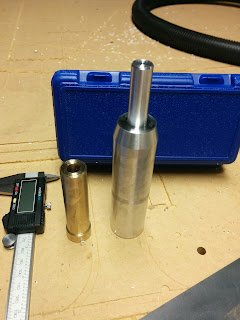Been a little while since we have done an update, but here a few of the projects I have been working on over the last few months.
Piston clock for me desk. Out of a BMW V8.
A coffee sign for a friends café he has just opened up. The sign is mounted inside a push-bike frame.
In order to reduce the acoustic noise pollution to environment from the CNC machine I have rebuilt the walls of the garage with insulation and multiple layers of villaboard (compressed cement). The next step was to install a solid heavy door and create a tight seal. This needed a latch to pull to door against its seal like a ship or submarine bulkhead door.
I came up with these design, then decided it didn't have enough gears, nor was it complicated enough so decided to add a 3:1 reduction planetary gear set to the assembly.
A new hallstand for home. The concept was to be a little creative and experiment with casting clear polyester resins into furniture. I am very pleased with the results.
Helping a friend make there spiral staircase safer and look better at the same time.
Playing with nesting features in CAM software and trying to great the most efficient tool paths and layouts possible, certainly are large reductions in machine times to be made here.
Also a little side lesson we learnt. Machining of tabs to holds parts together allows the creating on flexible hinges in parts. This could be a handy design feature I expect to be exploiting in the future with some of my designs.





























































